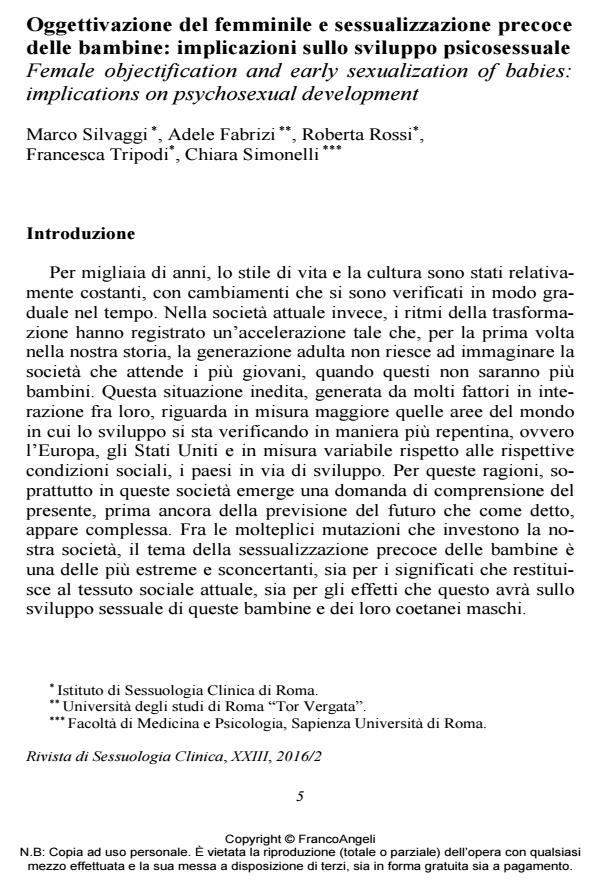Female objectification and early sexualization of babies: implications on psychosexual development
Journal title RIVISTA DI SESSUOLOGIA CLINICA
Author/s Marco Silvaggi, Adele Fabrizi, Roberta Rossi, Francesca Tripodi, Chiara Simonelli
Publishing Year 2016 Issue 2016/2
Language Italian Pages 15 P. 5-19 File size 386 KB
DOI 10.3280/RSC2016-002001
DOI is like a bar code for intellectual property: to have more infomation
click here
Below, you can see the article first page
If you want to buy this article in PDF format, you can do it, following the instructions to buy download credits

FrancoAngeli is member of Publishers International Linking Association, Inc (PILA), a not-for-profit association which run the CrossRef service enabling links to and from online scholarly content.
In today’s society, transformations have accelerated such that, for the first time in our history, the older generation cannot imagine what awaits their children. For these reasons, it emerges a question of understanding of this, even before the prediction of the future. For the support of women’s sexual health, current efforts are opposed to a certain pressure to conform to the object of men’s desires. The constant reminder exercised by an external or internal judgment, on the physical appearance interrupts concentration and decreases the possibility of getting in touch with personal feelings and needs. The hope is that more and more to spread the culture of the group of study and intervention, consisting of integrated and diverse professionals, who can understand the physiological, psychological, relational and cultural aspects, both in their peculiarities and mutual interactions.
Keywords: Objectification, early sexualization, sexual health, psychosexological development, sexual identity
Marco Silvaggi, Adele Fabrizi, Roberta Rossi, Francesca Tripodi, Chiara Simonelli, Oggettivazione del femminile e sessualizzazione precoce delle bambine: implicazioni sullo sviluppo psicosessuale in "RIVISTA DI SESSUOLOGIA CLINICA" 2/2016, pp 5-19, DOI: 10.3280/RSC2016-002001